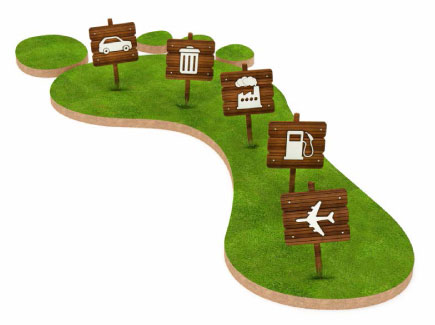Electronic vs. Print—Is it Better to “Go Paperless”?
 What’s the motivation? Doing the right thing is still a good motivator, but a growing number of companies are finding benefits they never expected: becoming an industry leader, gaining recognition, and deepening relationships with employees, suppliers and customers. One of the biggest motivators is still the bottom line. Due to the high use of paper, inks and chemicals in the printing and marketing industry, environmental issues are always in the spotlight. So here is the tough question—do we stop printing to reduce our carbon footprint?
What’s the motivation? Doing the right thing is still a good motivator, but a growing number of companies are finding benefits they never expected: becoming an industry leader, gaining recognition, and deepening relationships with employees, suppliers and customers. One of the biggest motivators is still the bottom line. Due to the high use of paper, inks and chemicals in the printing and marketing industry, environmental issues are always in the spotlight. So here is the tough question—do we stop printing to reduce our carbon footprint?
What is a Carbon Footprint?
What does the term “carbon footprint” really mean? The term is used to quantify the greenhouse gas emissions associated with an activity. For example, you can determine the carbon footprint of driving, running a household, or, in the case of Mossberg & Company, printing on paper. Let’s take driving a car as an example; most people understand that the carbon footprint is related to how much gas they use and how much toxic emissions are released when the engine is running. Owning a car that uses less gas—electric or hybrid and is in good running condition with all emission controls functioning properly—greatly reduces our carbon footprint for transportation. By reducing energy usage and by using renewable energy sources we can all play a part in lowering the impact on the environment.
Go “Paperless” or Print
The seemingly well-intentioned plea currently suggests that electronic communication is better for the planet and that printing is somehow irresponsible. When you look closely at the alternatives, the repercussions of going “paperless” are complex and it is becoming increasingly more obvious that the effects of electronic communication have serious implications for the environment too. The fact is that neither print nor digital media supply chains are 100% sustainable as they are currently configured.
Until recently paper-based media got most of the blame for deforestation and pollution while digital media’s dependence on coal-powered electricity went largely unnoticed. However, there is growing recognition that digital media technology uses significant amounts of energy from coal-fired power plants making a significant contribution to global warming. What is even less widely known is that mountaintop-removal coal mining is also a major cause of deforestation, biodiversity loss, and the pollution of over 1,500 miles of headwater streams in the United States.
Paperless appeals tend to use emotionally charged rhetoric to confront consumers with a false dilemma: “By using paper and print media you are knowingly degrading the environment, destroying forests and/or killing trees.” They play on the primal human affection for trees to make us feel guilty or hypocritical by suggesting that the use of paper-based media is despoiling nature and killing trees. Our use of electronic and digital media choices can have significant environmental consequences as well. This blog challenges consumers to look beyond the rhetoric to the hidden environmental aspects and impacts of BOTH print and digital media so they can make informed decisions.
There is no question that printers and marketers can and must do a better job of managing the sustainability of our supply chains and waste streams, but it’s a misguided notion to assume that digital media is categorically greener. Both paper and digital media have environmental footprints. Both also have their purpose and undeniable benefits. Being conscientious and aware of our effect on the environment in all we do at all times is being a good steward of our planet. And as a responsible steward we can choose how to communicate in the most effective way based on the needs of the project, in print, through emails, social media, websites, billboards, electronic signs or whatever future technology becomes available.